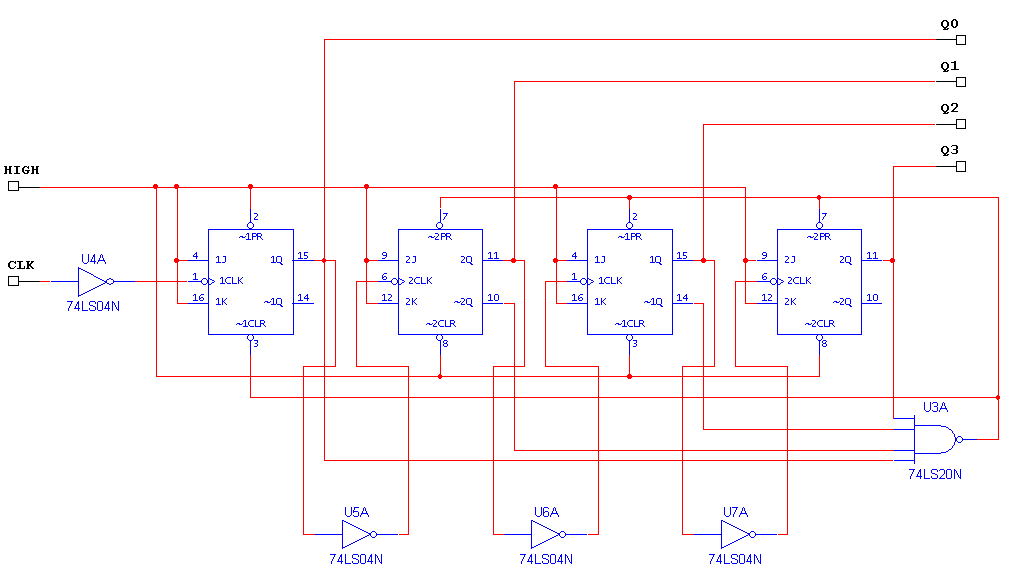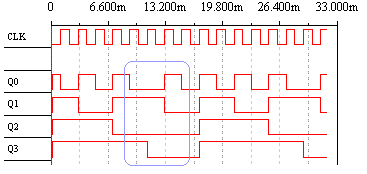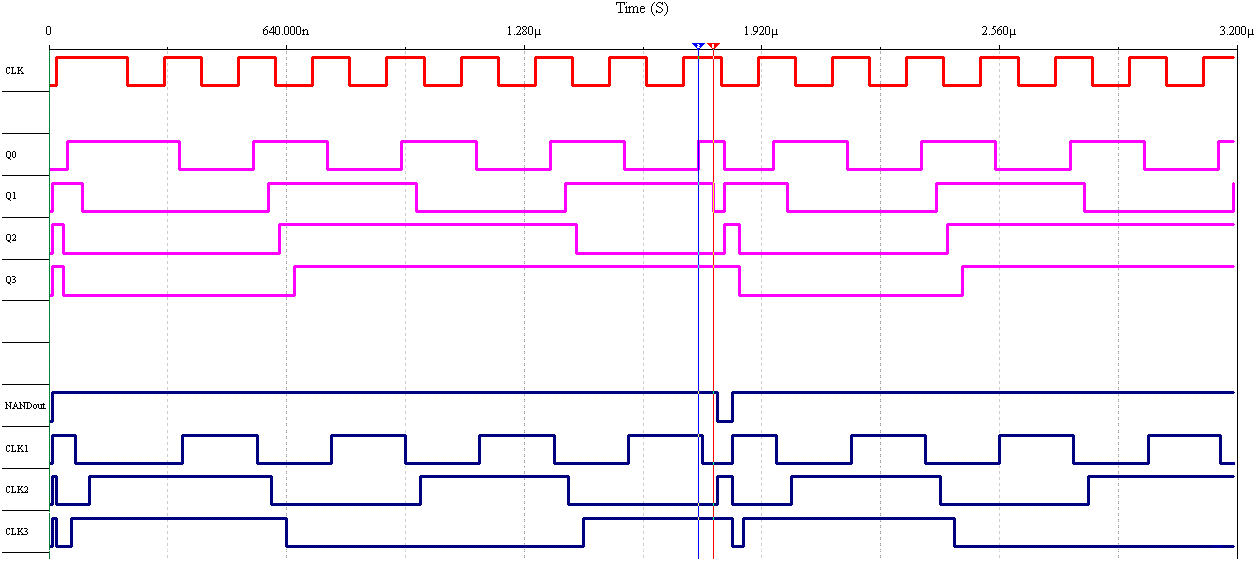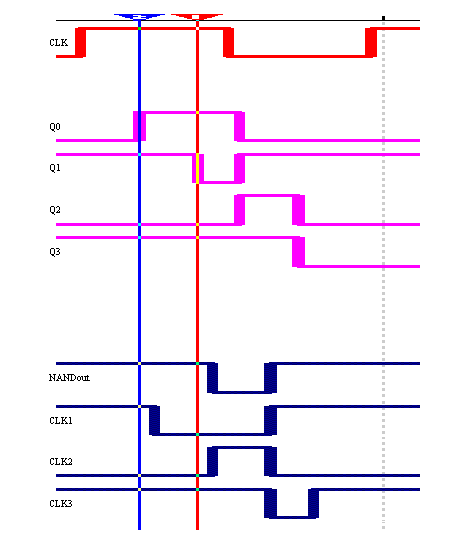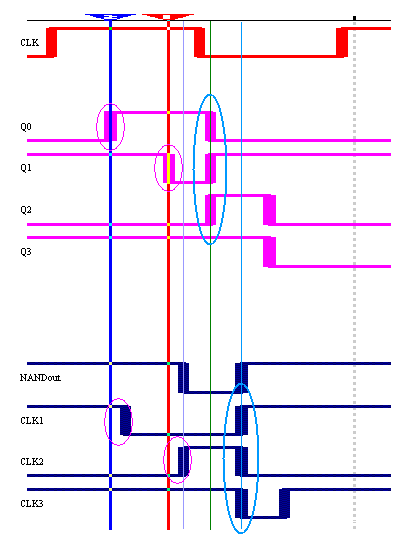student2005
Member level 3
I built an asynchronous counter, as shown in figure below, using Multisim v8.0.45 from Electronics Workbench. The timing diagram of the circuit is given in the 2nd figure below. In my opinion, after 1010 (see circled part), the asynchronous counter should be reset to 1110. But in the simulation result, the output after 1010 was 0010. Would anyone pls advise why? Thanks in advance.
